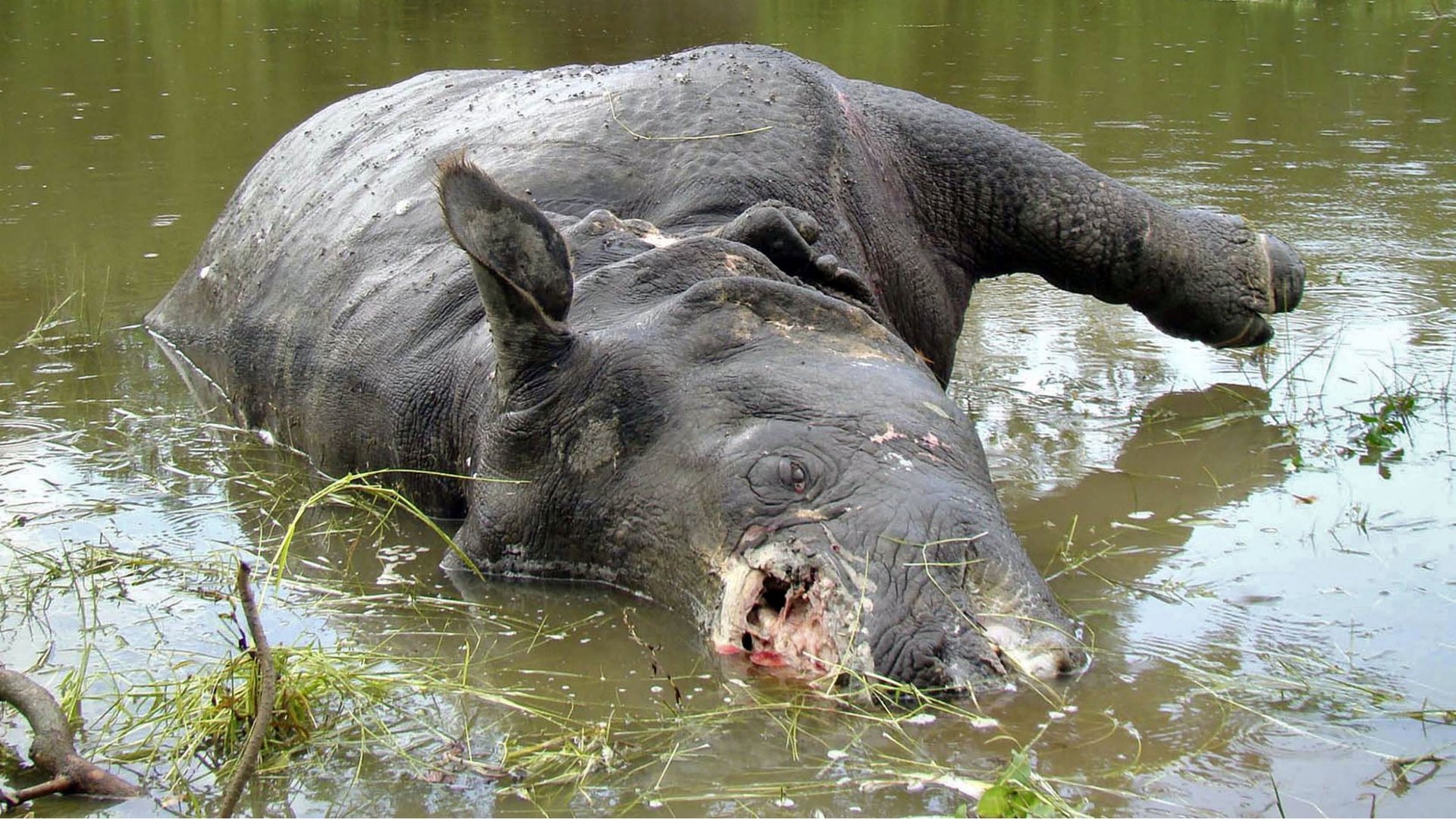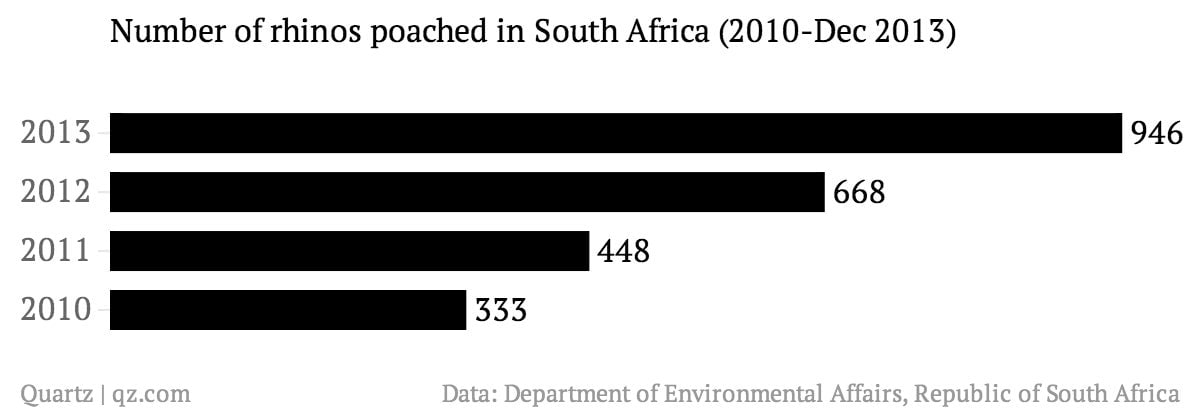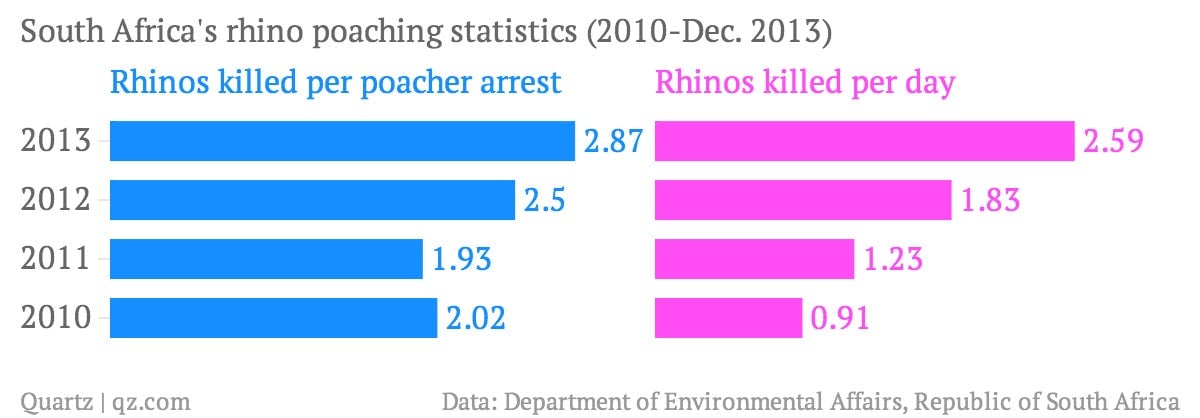China’s obsession with rhino horns is sending South African rhino deaths through the roof
One of the world’s flashiest luxury items isn’t made of gold or sold by Hermès. It adorns the snouts of rhinoceroses. That explains why poachers killed 946 of them in South Africa so far in 2013, 42% more than in 2012.


One of the world’s flashiest luxury items isn’t made of gold or sold by Hermès. It adorns the snouts of rhinoceroses. That explains why poachers killed 946 of them in South Africa so far in 2013, 42% more than in 2012.

That’s grim news given that something like 85% of the planet’s rhinos live in South Africa. At this rate, the animals will be extinct by 2032, say researchers. Though the country has stepped up poaching arrests this year, its authorities clearly can’t keep up.

What’s behind all the bloodshed? As we’ve covered in the past, pulverized rhino horn is coveted in Vietnam as both a designer party drug and a cancer cure. That’s driven the price of a rhino horn to between $45,000 and $60,000 per kilogram ($21,000-27,000 per pound).
But in recent years, Chinese demand for rhino horn has picked up more than most realize, as Tom Milliken, an expert in illegal wildlife trafficking, told China Dialogue. He says demand from southern Chinese provinces, such as Guangdong and Guangxi, is particularly strong.
“Their culture might be similar to what we have seen in Vietnam, where rhino horn is not often used as medicine but rather a product that provides status for its owners,” says Milliken. “This is what’s driving the trade in Vietnam, and may be part of what’s driving the new trade in China.”
He points to an 80% increase in rhino horn seizures in China in the last few years. While this shows that Chinese authorities are cracking down, it also offers a clue about the magnitude of China’s rising demand. (Interpol estimates that authorities confiscate only about 10% of illicit contraband, reports China Dialogue.)
And though seizures of cargo containers have picked up, so too has a trend in Chinese tourists purchasing rhino horns in Vietnam, something Milliken has tracked. That squares with a recent investigative report by conservationist Karl Ammann, who witnessed Chinese tourists snapping up rhino horn prayer bead bracelets in a village outside of Hanoi for about $15,000 a pop.
It also explains an uptick in activity elsewhere in the world. Those yields are promising enough to drive an elaborate global trade in rhino contraband. For example, Texas has emerged as the US’s rhino horn smuggling epicenter due to its taxidermy auction business, reports the Dallas Morning News. Last month, US authorities convicted a smuggler associated with the Rathkeale Rovers, an Irish organized crime outfit that’s been behind a spate of rhino head heists in museums throughout Europe. From Texas, horns typically go to New York or California, where they’re sold on to buyers in Asia.